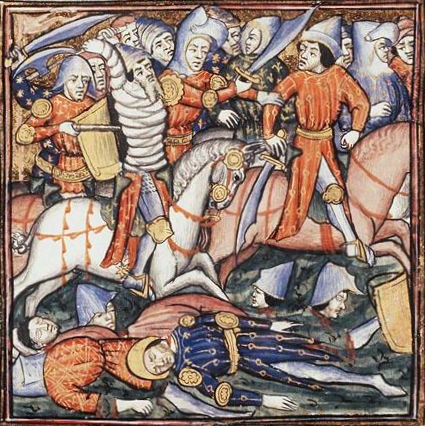
Story Highlights
- Historical event:
- 2 August 216 BC
- The Battle of Cannae took place during the Second Punic War (218 – 201 BC), after Hannibal’s army crossed the Alps with much hardship. The Romans gathered a huge army and met Hannibal at the mouth of the Ofanto River in Apulia. Even though the Romans had superior numbers and training, Hannibal’s brilliant tactics allowed them to decisively defeat the Romans and inflict horrendous casualties. According to some estimates, around 600 Romans died each minute during the last stages of the battle!
One of the most important and most researched battles in human history took place on this day in 216 BC.
An army of 50,000 Carthaginians under the famed general Hannibal faced a much larger Roman army (around 86,000 soldiers) led by consuls Lucius Emilius Paulus and Terentius Varro. Hannibal’s brilliant tactics allowed the Carthaginians to inflict a decisive defeat upon the Romans.
The battle took place during the Second Punic War (218 – 201 BC), after Hannibal’s army crossed the Alps with much hardship. However, this arduous journey gave Hannibal the strategic advantage and enabled him to defeat the Romans near Lake Trasimene and the Trebia. The Romans then gathered a huge army and met Hannibal at the mouth of the Ofanto River in Apulia.
Hannibal arranged his forces in order to make the most use of his superior cavalry (he placed it on the flanks of his army) while, in the center of his battle line, he mixed his veterans with inexperienced soldiers, most likely hoping the former would help bolster the latter. In contrast to the Roman commanders who traditionally accompanied the cavalry on the flanks, Hannibal stood among the infantry in the center of his battle line. Although some descriptions describe Hannibal’s elephants causing panic among the Romans, it is most likely they had all died before the battle.
After an indecisive skirmish between the light infantry, heavy fighting broke out between the infantry in the center of the battlefield and the cavalry on the flanks. While the Romans pushed back the Carthaginians in the center of the field, the Carthaginian light infantry on their flanks didn’t immediately join the fighting, but moved around the Romans’ flanks. Even worse for the Romans, the superior quality of the Carthaginian cavalry allowed it to quickly rout its Roman counterparts.
Thus, the Roman army was caught in a double envelopment. The Carthaginian cavalry then attacked it from behind and almost completely destroyed it – around 50,000 Romans were killed, including Paulus, while the Carthaginians had only 6,000 to 8,000 dead. According to some estimates, around 600 Romans died each minute during the last stages of the battle!
The Roman legion was excellently trained, organized and equipped, one of the best military units of its time. However, on this day in 216 BC, the Romans learned the painful lesson that even the best army can be ineffective if it is poorly led. The Romans failed to make use of their numerical advantage, nor did they react to the Carthaginian cavalry in time.
However, while the battle presented a huge tactical defeat for the Romans, the strategic advantage of Rome in the form of manpower and loyal allies allowed it to quickly recover and defeat Hannibal at Zama in 202 BC, thus winning the war.




